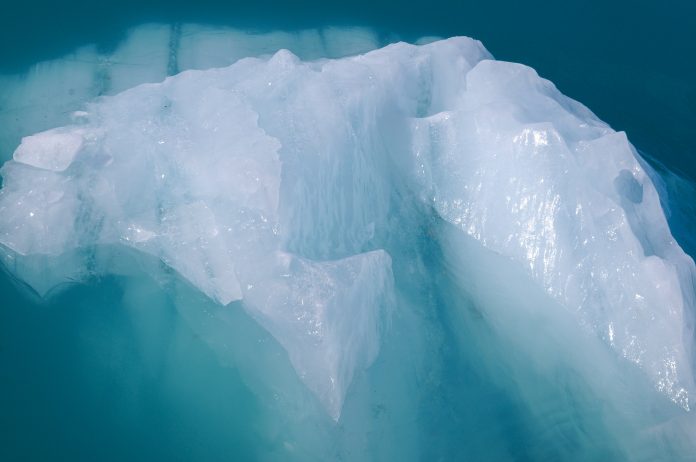Daniel Carbonell, TRI-HP Project Coordinator, explains solar ice-slurry systems and supercoolers, and reports on the latest innovations in natural refrigerant heat pumps for multi-family residential buildings
Solar ice systems & supercoolers for ice slurry production
Buildings can be efficiently supplied with renewable heating and cooling using what is known as solar-ice systems. These systems combine solar thermal collectors, heat pumps and ice storage to supply the energy needs in heating dominated regions with enough solar irradiation, e.g. Central Europe.
Solar-ice systems use solar thermal collectors as the only heat source for the heat pump. Solar thermal collectors are also used to supply heating and domestic hot water demands directly. As long as the sun is shining or the ambient temperature is not too low, solar collectors act as a direct heat source for the heat pump. During cold nights or days with low solar irradiation, when the energy from the solar collectors is insufficient to generate enough heat for running the heat pump directly from the solar collectors, the ice storage is used as a temporary heat source. Turning liquid water into ice releases a lot of thermal energy: icing 1 kg of water provides approximately the same energy as cooling down the same amount of water from 80 °C to 0 °C. Thus, the ice storage can store solar heat with a high volumetric storage capacity.
The solar ice-slurry system is a particular case of the solar-ice system. The main difference between them is that in the ice slurry concept, the ice storage contains no heat exchangers, which reduces the system installation cost by 10%. Moreover, the heat exchanger (supercooler) is always free of ice and thus has a higher efficiency compared to ice-on-coil.
The solar ice–slurry system can be compared to ground source heat pumps (GSHP) with the benefits of not having to drill boreholes and thus not being restricted by water protection laws. Moreover, there is no need to regenerate the ground as in the case of boreholes, even if the storage is buried in the ground since it regenerates on a yearly base by solar energy. This system concept is developed in the TRI-HP project for heating-dominated climates with cooling as an add-on feature using the ice-slurry produced in the storage vessel.
Supercoolers
The main technological barrier for solar ice-slurry systems is related to supercoolers, i.e., heat exchangers that can decrease water temperature below 0 °C, allowing the existence of water in a meta-liquid state and suppressing the ice formation.
In the context of the TRI-HP project, efficient supercoolers were designed and tested by SPF Institute for Solar Technology (SPF) from OST Eastern Switzerland University of Applied Sciences. For the new supercoolers, icephobic coatings made by the Danish Technological Institute (DTI) from Denmark and Industrielack AG (ILAG) were used and applied to heat exchangers from ALFA LAVAL. The cost of these coatings under the assumption of 250 m2 of plates surfaces coated per day is in the range of €4 per kW nominal heat pump capacity.
The tested TRI-HP supercoolers reached supercooling degrees up to 4 K, which is well beyond the 2 K achieved by state-of-the-art technologies. The average supercooling temperature was evaluated for seven freezing cycles for different icephobic coatings. Supercooling powers of around 6 kW were achieved with the new heat exchangers. The new supercoolers will be further tested by SPF together with heat pumps during summer 2021. The aim is to assess the full capacity range and reliability under dynamic conditions.
New heat pumps with natural refrigerants
The use of natural and environmentally friendly refrigerants with low Global Warming Potential (GWP) such as hydrocarbons, water, ammonia and carbon dioxide (CO2) has recently attracted much attention as a measure to mitigate the greenhouse gas emissions from refrigeration, air-conditioning and heat pumping systems. In this vein, new heat pumps with natural refrigerants (propane and carbon dioxide) are being developed and tested in the context of the TRI-HP project.

The Norwegian University of Science and Technology (NTNU) from Trondheim (Norway) has developed a single tri-partite gas cooler unit for a new CO2 heat pump design. This innovative heat pump design includes three brazed plate heat exchangers developed by ALFA LAVAL and aims to simplify the heat pump layout and reduce the piping requirements.
Experimental investigation shows promising performance while having a more compact design and a cost of around €308 per kW nominal heat pump capacity. Under the design conditions, the heat duty meets the requirements to provide the supply temperatures of 35 °C and 70 °C for space heating and domestic hot water applications. More information can be found on the TRI-HP website.
Fault behaviour of heat pumps: Detection & diagnosis methods
Heat pumps are increasingly being installed in residential buildings, which is an opportunity to reduce the energy needed to heat and cool buildings. However, this reduction will only be possible if the equipment is maintained correctly. Fault detection and diagnosis (FDD) systems can improve the cost of operating and maintaining heating and air conditioning systems, specifically heat pump, without influencing their performance.
In the TRI-HP project, the Catalonia Institute for Energy Research (IREC) developed a FDD algorithm emulating faults on a detailed heat pump model. Afterwards, the FDD was validated with experimental data obtained from real heat pump faults. The most common heat pump faults, the full methodology and experimental validation of the new FDD algorithm are published in a review and on the TRI-HP website.
TRI-HP Consortium
TRI-HP involves 12 partners from seven different European countries (Belgium, Denmark, Germany, Norway, Spain, Sweden and Switzerland): seven R&D partners (SPF, TECNALIA, IREC, ISOE, NTNU, DTI, UASKA), three SMEs (HEIM, EFC, ILAG), a large industry partner (ALFA LAVAL and an NGO (REHVA).

This project has received funding from the European Union’s HORIZON 2020 Research programme under the Grant Agreement no. 814888.
*Please note: this is a commercial profile











